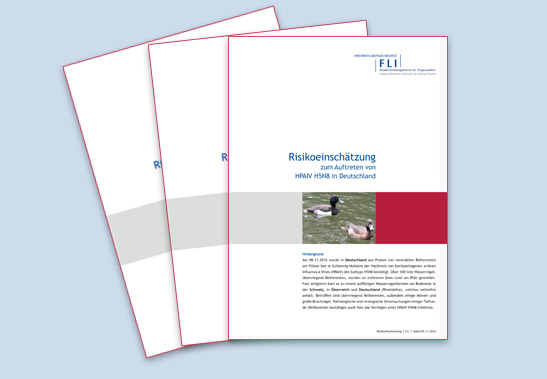In Europe, fluctuations in waterbird movements are to be expected due to changing weather conditions, as a result of which waterbirds on the coasts migrate in south-westerly directions or return to the coasts or also to their breeding areas. Weather-induced small- to medium-scale movements of waterbird species take place mainly in coastal areas, viruses can spread well in waterbird populations and be introduced into other populations over short distances, so that viruses can be exchanged within different resting populations. Cool temperatures and weaker UV radiation favour persistence of HPAI viruses in the environment. In Germany, a striking number of gulls were among the wild birds that tested positive for avian influenza virus H5N1 last month. Overall, more than twice as many cases were reported in wild birds than for January. The risk of spread and further spread of HPAI H5 viruses in waterbird populations in connection with fluctuations at collection sites within Germany is classified as high. In Germany, a striking number of gulls were among the wild birds that tested positive for HPAIV H5N1 last month. Overall, more than twice as many cases were reported in wild birds than for January.
The risk of HPAIV H5 introduction into German poultry holdings and bird populations in zoological institutions through direct and indirect contacts with wild birds is still considered high by the FLI.
The risk of introduction through the sale of live poultry through travel trade or poultry exhibitions within Germany and Europe remains high.
The number of outbreaks in poultry and captive birds in Europe is slightly decreasing. Therefore, a moderate risk of introduction through spread of the virus between holdings (secondary outbreaks) within Germany is assumed. For waterfowl farms, the risk of undetected circulation of HPAI H5 viruses and consequently of spread between poultry flocks is also considered to be moderate.
In the previous month, the latter two risks were still assessed as high.


